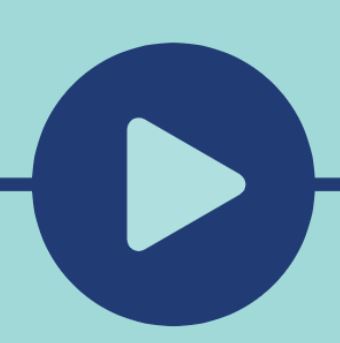Chapter 24
Classroom adaptation for physically impaired learners
Kofi Nseibo
Chapter learning Outcomes
After completing this chapter, you will be able to:
 Describe physical conditions that lead to physical impairment and how they present.
Describe physical conditions that lead to physical impairment and how they present. Examine the effect or impact of physical impairment on children in the classroom.
Examine the effect or impact of physical impairment on children in the classroom. dentify barriers to learning experienced by learners with physical impairment.
dentify barriers to learning experienced by learners with physical impairment. Apply teaching strategies for inclusive learning in their own educational context for learners with physical impairments using the principles of Universal Design for Learning (UDL).
Apply teaching strategies for inclusive learning in their own educational context for learners with physical impairments using the principles of Universal Design for Learning (UDL).
Preparatory activities
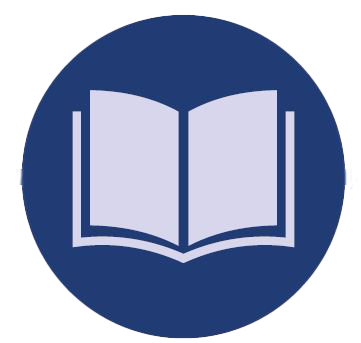
READ: Exploring the experiences of children and youth with mobility impairments in nfour basiceducational settings in Ghana
Author: Kofi Nseibo
Year: 2021
Estimated reading time: 30 minutes
File size: 5.1 MB
Read the summary, recommendation and conclusion (pages 221–235) of this doctoral dissertation. During the session it will help you to understand in depth the need to place the learner with physical impairment at the centre of an inclusive schooling environment.
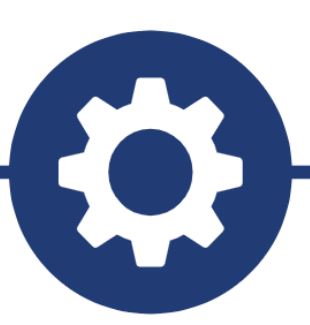
ACTIVITY
Estimated time:20 minutes
List and explain three teaching strategies that you will use to promote inclusion of learners with physical disabilities using UDL.
READ: Training toolsfor curriculum development: Reaching out to all learners: A resource pack for supporting inclusive education
Author:UNESCO International Bureau of Education
Year: 2016
Estimated reading time: 20 minutes
File size: 2.4 MB

ACTIVITY
Estimated time:15 minutes
Watch the video above which demonstrates the plight of children with disabilities who are trying to show everyone that they are “just like you”. This should be a wake-up call to all non-disabled people to show that persons with disabilities are just like non-disabled people and must be given equal attention in all things.
For the activity, write one thing you would do to support a child with physical impairment in the class. Your answers may be related to:
- Arrangement of classroom tables and chairs
- Physical pathways to the classroom and within the classroom.
- Classroom managemen
- Arrangement of teaching and learning materials.
- Communication in the classroom.
- Good relationship with learners and their parents.
Introduction
A physical impairment is a physical condition that affects a person’s mobility, physical capacity, stamina or dexterity. This can result from brain or spinal cord injury, multiple sclerosis, cerebral palsy, respiratory disorder, epilepsy, hearing and visual impairment, and other conditions.
Learners with physical impairment may have difficulties related to movement, posture (e.g. sitting, standing or walking), grasping or manipulating objects, communication, eating, perception or reflex movement. With support, learners with physical disabilities can function well in the classroom.
Every learner with physical impairment has different needs and will need different reasonable adjustments and adaptations to be made in order to attend school, participate in school activities and access the curriculum. Reasonable adjustments and adaptations are identified based on the learners’ individual needs and may include adjustments in learning activities, teaching strategies, assessment, communication, use of specialised equipment or assistive technology, or changes in the classroom and the school’s learning environment in general. The learner with physical impairment may also need adaptation to support them to engage with peers and to stay healthy and safe in the school and in the classroom.
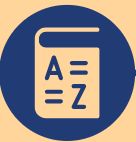
GLOSSARY: Mobility-impaired
“Mobility-impaired” refers to a person who is subject to a physiological defect or deficiency regardless of its cause, nature or extent that renders the person unable to move about without the aid of crutches, a wheelchair or any other form of support; or that limits the person’s functional ability to ambulate, climb, descend, sit, rise or perform any related function.
Learners with physical impairment and neurological conditions may also have perceptual difficulties that can take various forms. Some learners have difficulty receiving information by hearing or sight, while others can see or hear, but cannot process the information they receive. This can cause difficulties with reading and writing, such as locating the correct place on the page, or moving from left to right when reading and writing. Learners with a neurological condition, and who may also have a physical impairment, may have speech and language difficulties. Learners who are deaf, or who have partial hearing, may have difficulty communicating through speech. Learners with cerebral palsy, for example, may have communication difficulties and are often thought to be far less able than they really are. It is important to avoid making quick judgments concerning a learner’s intelligence and ability if their speech is slow, slurred, or if they are non-verbal.
In this chapter, we continue to discuss the impact of different types of impairment with a focus on physical impairment – that is, examining the effects or impact of physical impairment on children in the classroom. We also examine barriers to learning experienced by learners with physical impairment and the experiences of learners with physical impairments as well as classroom adjustment and adaptation that will promote their active participation in the class. Let us now look at important physical conditions that lead to physical impairment, their impacts and the barriers faced by physically impaired learners.
Causes, impact and barriers related to physical impairment
In this section, we look at some of the conditions that can lead to physical impairment, as well as the impact of physical impairment on both learners and learning. We also examine the environmental, social and economic barriers that exclude learners with physical impairment.
Conditions that can lead to physical impairment
Several conditions may result in physical impairment – which can be permanent, temporary or intermittent in nature. Examples of physical impairments include cerebral palsy, arthritis, muscular dystrophy, multiple sclerosis, Parkinson’s disease and repetitive strain injury. Speech and vision may be affected in learners with cerebral palsy. Back and neck injuries may also affect mobility and physical disability can result from head injury.
Generally, physical disability (or any other kind of disability) can occur at prenatal, perinatal, and postnatal periods of a pregnancy. Prenatal means between conception and before birth. Conditions that can cause disabilities within this period include exposure to cigarette smoking, urinary infection, hypertension, threatened abortion and gestational diabetes. Perinatal is the period between labour and delivery. That is, the time immediately before and after birth. Conditions that can cause disabilities include acute fatal distress prematurity, exceeding the term, difficult labour, low birth weight and macrosomia. Postnatal denotes the period after childbirth. Conditions that can cause disabilities include respiratory infection, auditory deficit, urinary infection and blood disease.
Impact of physical impairment on the learner
The impact of physical impairment on learners includes:
- Coordination and balance may be mildly or severely affected by movement, or may be impaired by muscle spasms, numbness or pain.
- Manipulating equipment and learning materials and doing writing tasks may be difficult.
- Learners using wheelchairs, callipers, crutches, walking sticks, white canes, etc. may be slow in all activities in school. Learners with physical disabilities may also experience chronic fatigue or extreme fluctuations of energy from day to day.
Impact of physical impairment on learning
Apart from the impact on the learner, there is also an impact on the learning process. The impact of physical disabilities on learning varies, but most learners struggle with issues related to:
- Physical access in terms of transportation from home and navigating the school compound as well as classroom arrangements.
- Ability to manipulate equipment and learning materials in laboratory work, practical experiments and demonstrations.
- Ability to access modified keyboards, on-screen and touch screen keyboards, specialised computer mice, screen-reading software, speech-to-text software, magnification software, eye-gaze communication devices and braille.
- Restrictions in participation in field trips and the time and energy expended in moving around campus.
Other effects on learners with physical impairments include them needing more time to move between venues and do simple tasks. Fatigue is also common for many of these learners and utilising facilities such as toilets, food outlets, libraries and lecture rooms can be a major task. Learners may also have frequent or unexpected absences from class due to hospitalisation or changes in rehabilitation or treatment procedure. Learners with long-standing mobility issues may have experienced gaps in schooling due to periods of hospitalisation, which can affect their confidence in learning.
Learners with physical disabilities may have fewer opportunities for interaction with other learners and feelings of separateness in the learning environment can impact negatively on their learning.
In addition to the impact of the physical impairment on the learners and learning, there are barriers that exclude learners with physical disabilities from schools.
Impact of physical impairment on learning
Apart from the impact on the learner, there is also an impact on the learning process. The impact of physical disabilities on learning varies, but most learners struggle with issues related to:
- Physical access in terms of transportation from home and navigating the school compound as well as classroom arrangements.
- Ability to manipulate equipment and learning materials in laboratory work, practical experiments and demonstrations.
- Ability to access modified keyboards, on-screen and touch screen keyboards, specialised computer mice, screen-reading software, speech-to-text software, magnification software, eye-gaze communication devices and braille.
- Restrictions in participation in field trips and the time and energy expended in moving around campus.
Other effects on learners with physical impairments include them needing more time to move between venues and do simple tasks. Fatigue is also common for many of these learners and utilising facilities such as toilets, food outlets, libraries and lecture rooms can be a major task. Learners may also have frequent or unexpected absences from class due to hospitalisation or changes in rehabilitation or treatment procedure. Learners with long-standing mobility issues may have experienced gaps in schooling due to periods of hospitalisation, which can affect their confidence in learning.
Learners with physical disabilities may have fewer opportunities for interaction with other learners and feelings of separateness in the learning environment can impact negatively on their learning.
In addition to the impact of the physical impairment on the learners and learning, there are barriers that exclude learners with physical disabilities from schools.
Barriers that exclude learners with physical impairment
The UNESCO International Bureau of Education (IBE-UNESCO) identifies three major types of barriers that physically impaired learners could face: environmental, social and economic, and academic.
Figure 1 shows the three barriers that exclude learners from schools in relation to presence, participation, and achievement (PPA). According to IBE-UNESCO (2016), inclusion is concerned with the identification and removal of barriers that prevent learners from school, participating in school activities and achieving the learning outcomes. Further, inclusion is about PPA of all children. “Presence” refers to where children receive their education and how reliably and punctually they attend school. “Participation” refers to the quality of children’s experiences while they are present in the school and must incorporate the views of the learners themselves. “Achievement” pertains to the outcomes of learning across the curriculum, not merely test and or examination results. In the section below, we shall discuss barriers that exclude learners with physical impairment from school.
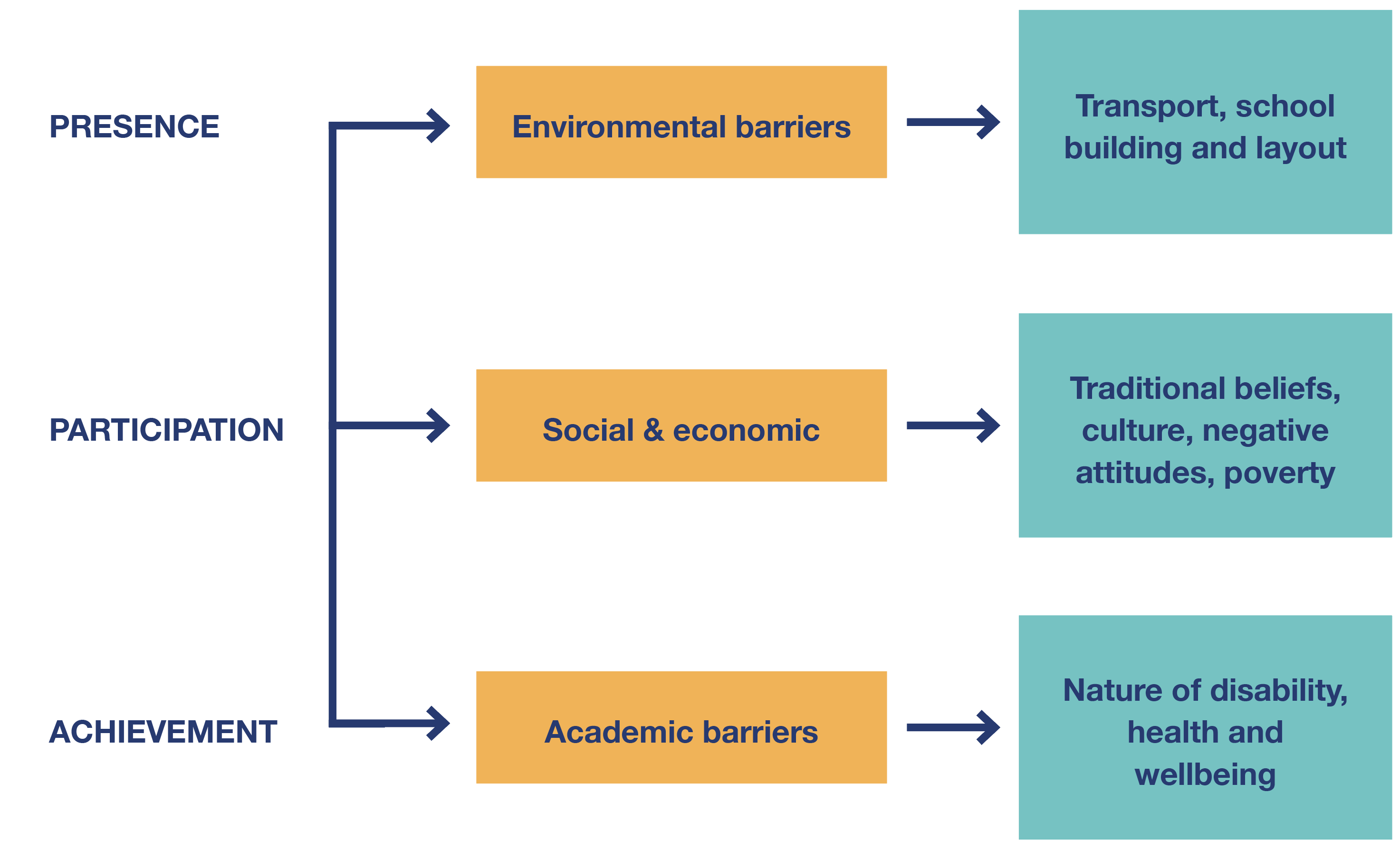
Environmental barriers relate to transportation and physical infrastructure such as school buildings. Learners with physical impairment may need specialised transport in order to get to school. Transportation involves money and having resources to own a car, rent taxies, etc. Traditionally, most school buildings are not designed to make learners with physical impairment feel comfortable and they cannot move about freely in the school or in the classroom. A friendly school environment promotes learning for learners with physical impairment.
Social and economic barriers pertain to the income level of the families of learners with physical impairment. The literature shows that parents of physically impaired learners are typically engulfed in poverty (Slee et al., 2019). Traditional beliefs about learners with impairment, negative attitudes towards disability and how families that have children with physical impairment are treated in communities also constitutes a barrier.
Typically, cultural beliefs marginalise learners with physical impairment, preventing them from accessing the educational opportunities which are meant to be enjoyed by all learners. For instance, in Ghana, there is a general superstition about the causes of disability (Agbenyega, 2003; Avoke, 2001). That is, some people in Ghana believe that causes of disability can be attributed to the acts of demons, witchcraft and wizards and that children with disabilities are demon-possessed (Agbenyega, 2003; Avoke, 2001 ; Nseibo, 2021). Such beliefs can cause parents to hide children with physical impairment in their homes, thus preventing them from going to school – and, in some cases, “wo gya won kwan ma wo san ko won akyi [are made to return to where they came from]” ... which means that such children are killed ( Nseibo, 2021, p. 211). The action of society to avoid whatever is associated with evil affects people’s beliefs and attitudes towards children with disabilities. These misconceptions have produced negative attitudes within the family, the community and the school and have created barriers that impact on the education of learners with physical impairment.
Academic barriersrefer to how impairment presents (that is, the nature of the impairment as seen on the learner – mild, severe, etc.) and impacts on the ability of learners with physically impairments to learn. As discussed in Chapter 23, the ICF aims to provide scientific basis for understanding and studying health and health-related states, outcomes, determinants and changes in health status and functioning. It also aims to establish a common language for describing health and health-related states to improve communication between different users, such as healthcare workers, researchers, teachers, education officials, policy-makers and the public, including people with disabilities. The ICF classifies impairment according to the support that would be required by each person with physical impairment. Teachers and educators may need these reports by medical practitioners in order to prepare individual support plans for learners who may encounter academic barriers and which promote lifelong learning.Individual support plans should be based on physically impaired learners’ strengths, weaknesses, opportunities and threats (SWOT). A SWOT analysis can be used to identify the barriers that learners with physical impairment may experience at school.
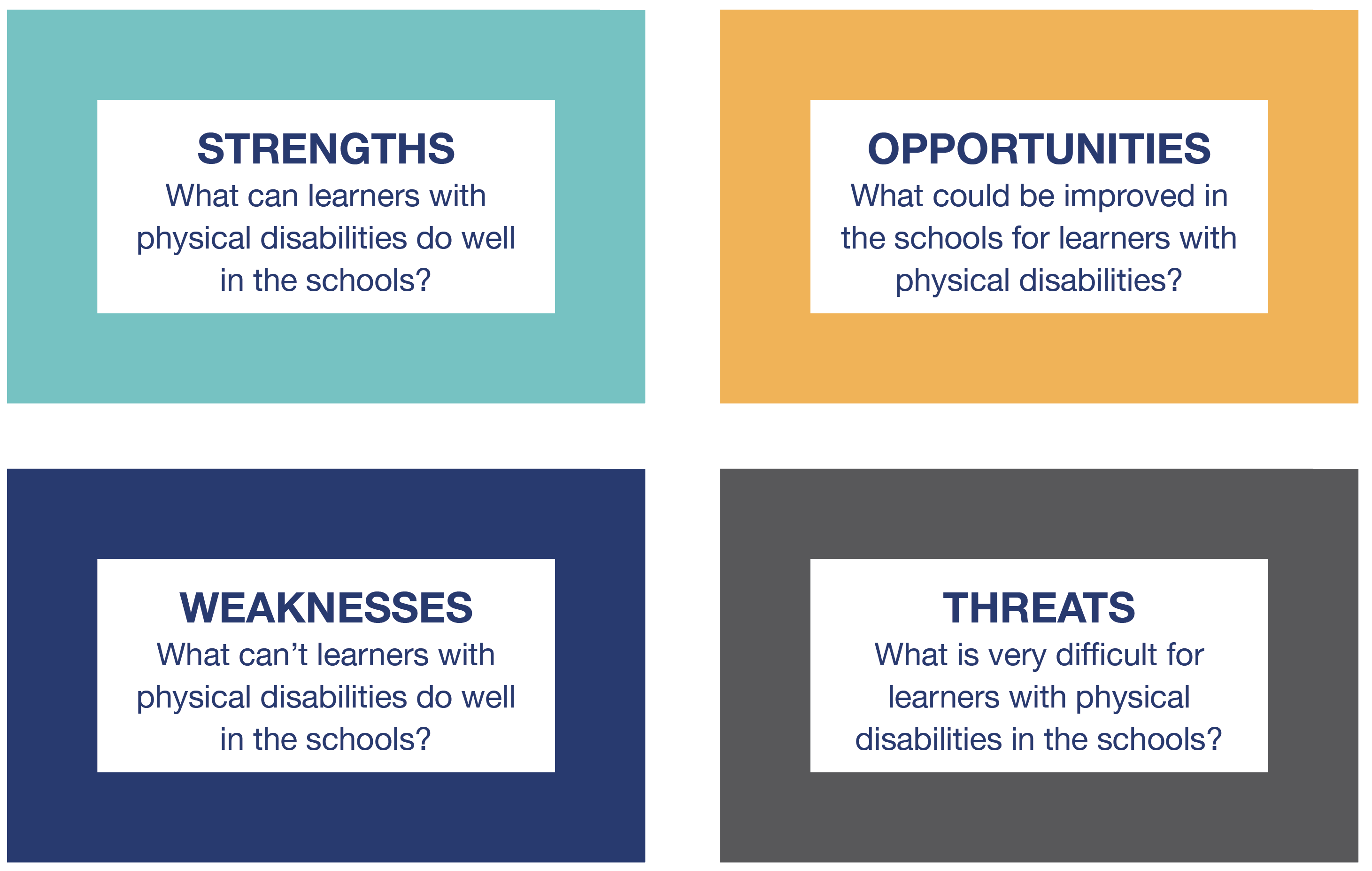
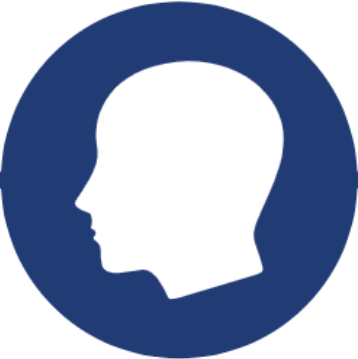
REFLECTION
Estimated time:10–15 minutes
Reflecting on the SWOT analysis presented in Figure 2, identify and list at least four things you think are the strengths, weaknesses, opportunities and threats for learners with physical impairments.
Teaching and learning strategies for inclusive practices
The inclusive schooling practices framework (ISPF) (Nseibo, 2021) utilises UDL principles to promote inclusive practices in schools. The ISPF considers learners’ development and learning in terms of the wider environment (layers in the framework) – from home (parents and communities) to the school (teachers, schools, classrooms and school layout). It places learners with physical disabilities at the centre of the picture and argues that good teaching strategy must involve collaboration between the school and the home, where parents and community members together with the teachers contribute to inclusive schooling practices.
The ISPF considers presence, participation and achievement by the learner with physical impairment to articulate strategies to bring learners from their homes to the school and support them by using the UDL principles to:
- Engage and sustain their interest and persistence (multiple means of engagement).
- Make teachers’ instructions accessible and improve learners’ understanding (multiple means of representation).
- Support learners to show their learning in different ways (multiple means of action and expression).
These UDL principles enable all learners to achieve the expected learning outcomes.
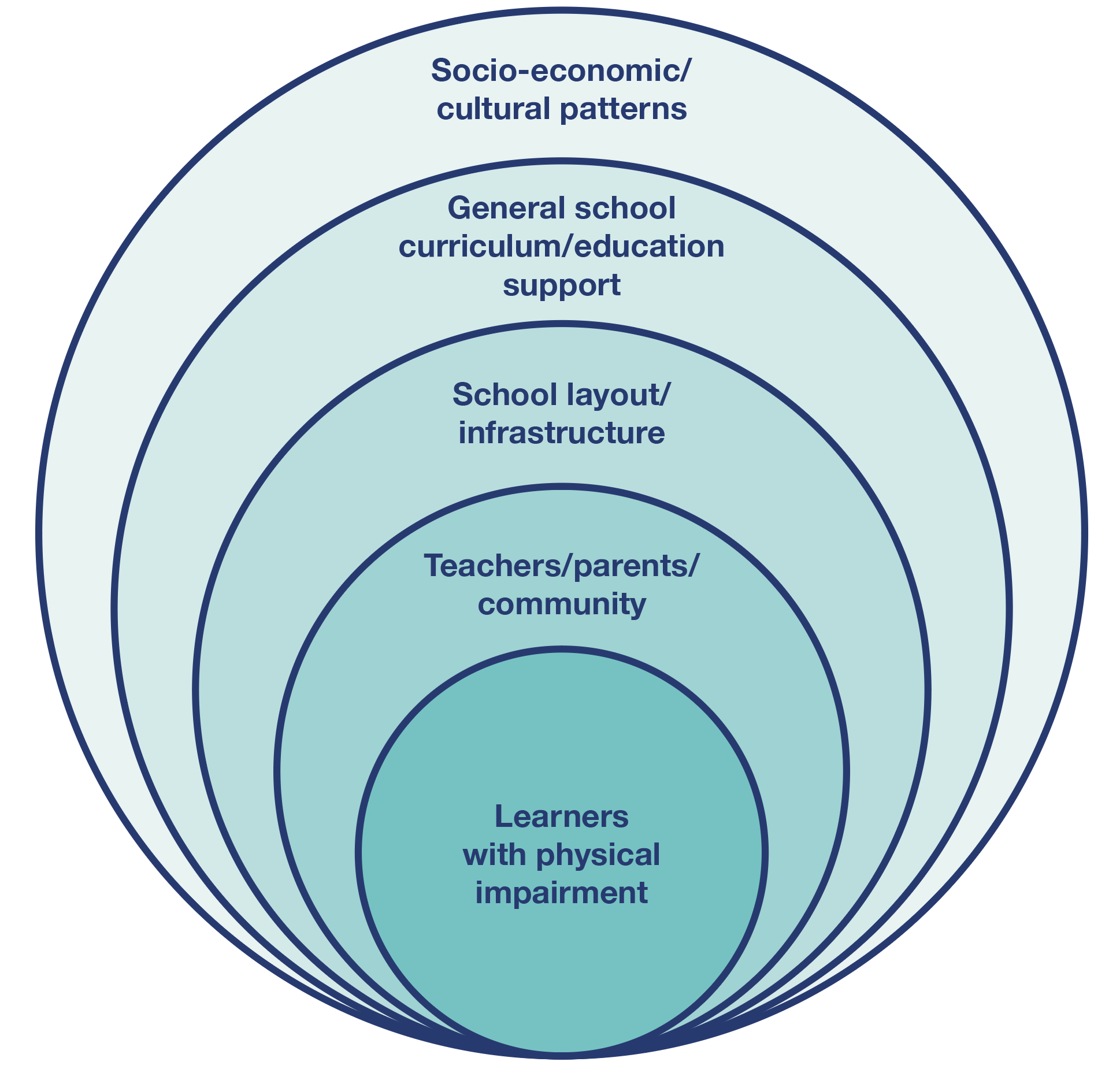
In order to sustain learners’ interest and motivation to achieve expected learning outcomes in the classroom, teachers and educators should consider the IBE-UNESCO guidelines (2016), which provide the following indicators for inclusive schooling practice:
- Every learner is made to feel welcome.
- All learners are equally valued by both learners and staff
- There are high expectations of all learners
- Staff and learners treat one another with respect
- There is partnership between staff and families of all learners in the school
- The school is accessible to all learners.
- Senior staff support teachers in making sure that all learners participate and learn, and teachers are given the necessary resources.
- The school monitors the presence, participation and achievement of all learners
It is also important to note that physical impairments should not exclude learners from participating in classroom activities. Depending on a learner’s impairment, a well organised, adaptive class or modifications within the learning space will embrace all. Table 1 describes some barriers that can be encounterd by learners with physical impairments and corresponding suggestions for classroom adaptations.
| Barriers/challenges | Classroom adaptation |
|---|---|
| Has unique needs in terms of physical space or difficulty using chairs/tables in the classroom/lab. | Create a physically accessible environment that does not impose mobility constraints. |
| Needs specialised transportation. | Be flexible with the classroom schedule. Learners may arrive late or need to leave before the class is over due to transportation requirements. |
| Often physically unable to hold a pen and write for extended periods of time. | Replace written exams or assignments with an oral exam or presentation. |
| Experiences fatigue and limited mobility when speaking to a person for a long period of time. | Use a note-taker/scribe or speech-to-text software to record answers in tests/exams. |
| Requires extra time to obtain formats compatible with assistive technology. | Provide a room other than the classroom for exams, if required. Provide extra time for tests/exams and some components of coursework. |
| Feels excluded during group exercises or has difficulty moving around the classroom. | Make sure that the person is always included with others when forming groups. Allow learners to take part in all school activities. |
| Expends a great deal of energy to complete daily tasks. | To reduce fatigue of learners with physical impairment, it may be helpful to limit the number of exams on a given day or week. Extra time should be planned for oral reports on occasion if the person has diction problems. You may reduce course load. |
| Experiences challenges with daily living activities and mobility. | Make sure that all off-site activities are accessible. You may provide alternative assignment options. |
Conclusion
The initial barrier experienced by many learners with physical impairment is physically accessing the learning environment itself. For many learners with physical disabilities, the inaccessibility of buildings and surrounding areas is problematic.
As we learned in Chapter 23, physical impairment may have an impact on some or all activities in the school to a greater or lesser extent. Learners with physical impairment may have problems related to movement, posture (e.g., sitting, standing), grasping or manipulating objects, communication, eating, perception, reflex movements, and/or automatic motricity (e.g., sphincter, intestinal muscles). In this chapter, we discussed the three major barriers (environmental, social and economic, and academic) that prevent learners with physical impairment from active participation in the school and in classroom activities. It was noted that learners with physical impairment have strengths, weaknesses, opportunities, and threats, and that a SWOT analysis can assist teachers and educators in getting to know their learners and in developing an individualised educational plan for each learner. Common challenges encountered by learners with physical impairment and their suggested classroom adaptations were laid out. We discussed how children with physical disabilities could be placed in the centre of inclusive education schooling system and the indicators that show an inclusive schooling practice were enumerated.
References
Agbenyega, J. S. (2003). The power of labeling discourse in the construction of disability in Ghana. Australian Association for Research in Education. https://www.aare.edu.au/data/publications/2003/agb03245.pdf
Avoke, M. (2001). Some historical perspectives in the development of special education in Ghana. European Journal of Special Needs Education, 16(1), 29–40. http://dx.doi.org/10.1080/08856250150501789
IBE-UNESCO. (2016). Training tools for curriculum development: Reaching out to all learners: A resource pack for supporting inclusive education. IBE-UNESCO. https://unesdoc.unesco.org/ark:/48223/pf0000243279
Nseibo, J. K. (2021). Exploring the experiences of children and youth with mobility impairments in four basic educational settings in Ghana [Doctoral dissertation, University of Cape Town]. http://hdl.handle.net/11427/34022
Slee, R., Corcoran, T., & Best, M. (2019). Disability Studies in Education: Building platforms to reclaim disability and recognise disablement. Journal of Disability Studies in Education, 1(1–2), 3–13. https://doi.org/10.1163/25888803-00101002
Copyright 2024 Kofi Nseibo
Licensed under a Creative Commons Attribution 4.0 International licence

